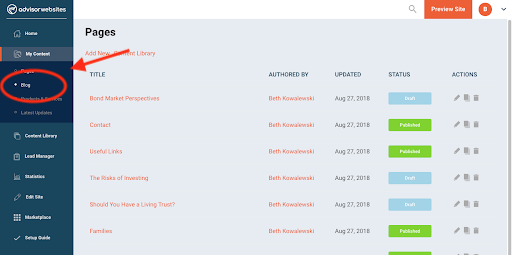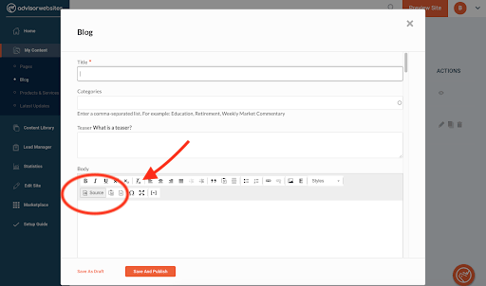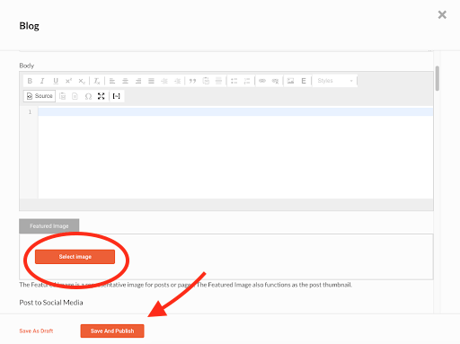Why Video is Important to Your Digital Marketing Strategy
When it comes to creating a content strategy, video is often one of the last projects that advisors will take on. Understandably so, as it can take more time in preparation and investment in equipment and software than other types of content. However, it’s important to note that in recent years video has gained a positive reputation for its ability to generate higher engagement and more lead opportunities. It’s become a powerful tool for sales enablement and many advisors are starting to see the value in creating quality videos for their website and digital marketing strategy.
If you’re currently not using video in with your marketing strategy, here are a few impressive findings from Wyzowl’s 2020 State of Video that might convince you to revise your plan:
- 87% of video marketers say video has increased traffic to their website.
- 80% of video marketers say video has directly helped increase sales.
Video has also been proven to increase your audiences engagement and retention of your brand and product/service offering. We know that the average person watches an average of 16 hrs of online video per week! (This is an increase of 52% over the past 2 years). As far as performance goes, 84% of people say that they’ve been convinced to buy a product or service by watching a brand’s video. (1)
Types of Videos to Incorporate
Incorporating video into your marketing strategy can be daunting to take on if you’ve never created a video before. There are many types of videos you can create, so your first task is figuring out what your objective or end goal is for your video. For instance, if your objective is to educate your audience on a service or industry trend, consider making a How-to or Thought Leadership video where you share your expert knowledge. If you’d like to let your audience know who you are and what your business offers, a Brand/Introduction video on your homepage is a great option!
Here is a list of the most common types of marketing videos with brief explanations and suggestions on how to apply them to a financial advisory business. Remember - your video doesn’t have to be super long, in fact, the shorter the better! Relaying all information succinctly is the key!
Brand videos
- This will most likely be the type of video you’ll want to make. This style of the video showcases your brand and company. In the case of a financial advisory firm, you’ll want to focus on introducing yourself and your team, if you have one, as well as the services that you specialize in. This video is perfect for the homepage of your website or on your Bio/About page. It's a great way to show a bit of your personality and connect with the visitor on a personal level.
Demo videos
- A demo video demonstrates how a particular product or service offering works. This can be useful in explaining your approach or processes in working with your clients as a way of differentiating your service offering from another financial advisor or firm. An impressive 95% of YouTube users watch an explainer video to learn more about a product or service. (2)
Webinar replay videos
- If you host a webinar make sure it’s recorded so that you can make it available as an on-demand replay on your website. This is what Advisor Websites does with all of our webinars! Check them out here. This way it’s not just a one time thing, it keeps providing its educational value to your audience.
Educational/thought leadership videos
- You might interview one of your staff members, or even a self-interview, to provide expert advice on a particular topic. Thought Leadership videos are the perfect content for sharing on social media as it positions you as a leader in your industry and a reliable source of industry information. If your followers find your insights helpful, there is a good chance they will share it with their own network. Social media posts with video have 48% more views. (3)
Animated videos
- These can be great but they can be expensive to produce if you outsource it. The videos that we provide to our customers in our content library are animated videos. One of the benefits of doing your own videos is being able to put a face to your company, as is not the case with animations. However, with animated videos they are timeless and remain relevant even if a staff member leaves your organization.
Case study videos
- Case study videos are a great way of building credibility and trust with an audience, however, as a financial advisor, it’s very important to ensure that you’ve submitted it and received approval from your compliance agency/officer prior to posting it on your website. Even better, get approval on the content prior to filming it so you’re in the clear and don’t waste your time. Best way to avoid getting flagged! Best practice is to steer clear of any promising statements or predictions of any future performance. Consider adding a disclaimer at the beginning or end of your video to ensure there are no misunderstandings.
Live videos
- These are great for social media! Keep it short and (mostly) unscripted as you’ll want it to be authentic and natural. A great time to consider creating one of these short videos would be during a live event or conference that you’re attending or hosting. Don’t forget to share them right away on your social feeds!
Personalized videos
- There are times when creating a personalized video for a client can go a long way! It can be an effective way of connecting with an individual, a team, or even a group of clients that all have the same question. You may record yourself and/or a screen share to further demonstrate your point. An awesome and free tool available out there is Loom. Check it out & enjoy!
How to Upload videos to your website
Once you’ve decided on the type of video you’d like to create, the next step is deciding where to make it available for your audience. There are many video hosting platforms to choose from, including Wistia, Vimeo, Vidyard and YouTube. YouTube is the most popular video hosting platform (with over 300 hours of video upload every minute!4) for a few reasons. The main one being that videos hosted on YouTube can significantly boost your SEO because Google’s algorithm provides its users with a variety of video content in their search results. It also doesn’t hurt that Google owns YouTube so it’s more likely to push users to videos hosted on this platform.
The 5 easy steps to uploading a video on your Advisor Website’s Blog:
- Navigate to your ‘My Content’ tab on the left-hand column of your dashboard. Once you click ‘My Content’, you’ll see ‘blog’ in the dropdown menu. Click here to open a new page.

- A popup will appear after you click the blog tab, see screenshot. This is where you can edit your blog, which is the same process if you’re wanting to upload an article. For videos, click the ‘source’ tab circled in red below. This is where you can embed the code of your video, which you will need to copy from whichever platform the video is hosted on.

- Once that code is pasted into the text box, you can now add a featured image that will appear on your blog’s feed. Even if you don’t intend to share the post on your social media, we still recommend uploading a featured image and giving it a name that describes its content. This is an SEO best practice as images on your website will also be crawled by search engine, creating more opportunities for prospects to find you online.

- There are a few additional SEO fields within your blog that are worth taking the time to fill out. We recommend filling out the fields for your meta description and title tags. Their purpose is to communicate with Google and another search engine, what each page offers. The more information there is to index, and the more specific and relevant your meta tags are, the more likely you are to rank higher on relevant search results.
- Press ‘Save and Publish’!
Best Practices to Consider
Here are some best practices to consider before getting started:
- Keep it short: Keep your videos concise, it’s hard to gain your audience's attention but even harder to keep it! If you’re planning to share your videos to social media (which can help drive more traffic to your website), stay around 1-2 minutes for Facebook and LinkedIn, and no longer than 30-45 seconds for Instagram and Twitter. (5)
- Relevancy: Your video needs to be relevant to your industry and niche; don’t lose sight of your objective.
- Thumbnail Image: Always upload a thumbnail image for times that the internet is slow or the browser isn’t supported.
- Quality and Size: Your video should be between 3-8 MB in size to avoid long loading times and to create a more user-friendly experience. Longer loading times HURT your SEO; this point is absolutely crucial to find a balance between high-quality images and file size!
Conclusion
We hope this blog has helped spark some inspiration in getting started with video marketing. If you’d like to learn more, including the necessary steps in creating your own videos, check out our other resources to help you get started:
Blog - Getting Started with Video Marketing: A Step-by-step Guide
Webinar Replay - Video Marketing for Financial Advisors in Partnership with Social Video
Webinar Replay - Video Marketing: A Step-by-Step Guide
References:
1 https://wyzowl.s3.eu-west-2.amazonaws.com/pdfs/Wyzowl-Video-Survey-2020.pdf
2 https://www.impactbnd.com/blog/new-video-marketing-statistics
3 https://biteable.com/blog/tips/video-marketing-statistics/
5 https://blog.hubspot.com/marketing/how-long-should-videos-be-on-instagram-twitter-facebook-youtube







